Soldiers don exoskeleton suits, operate automated packing line to prepare 2024 NDP packs
Sign up now: Get ST's newsletters delivered to your inbox
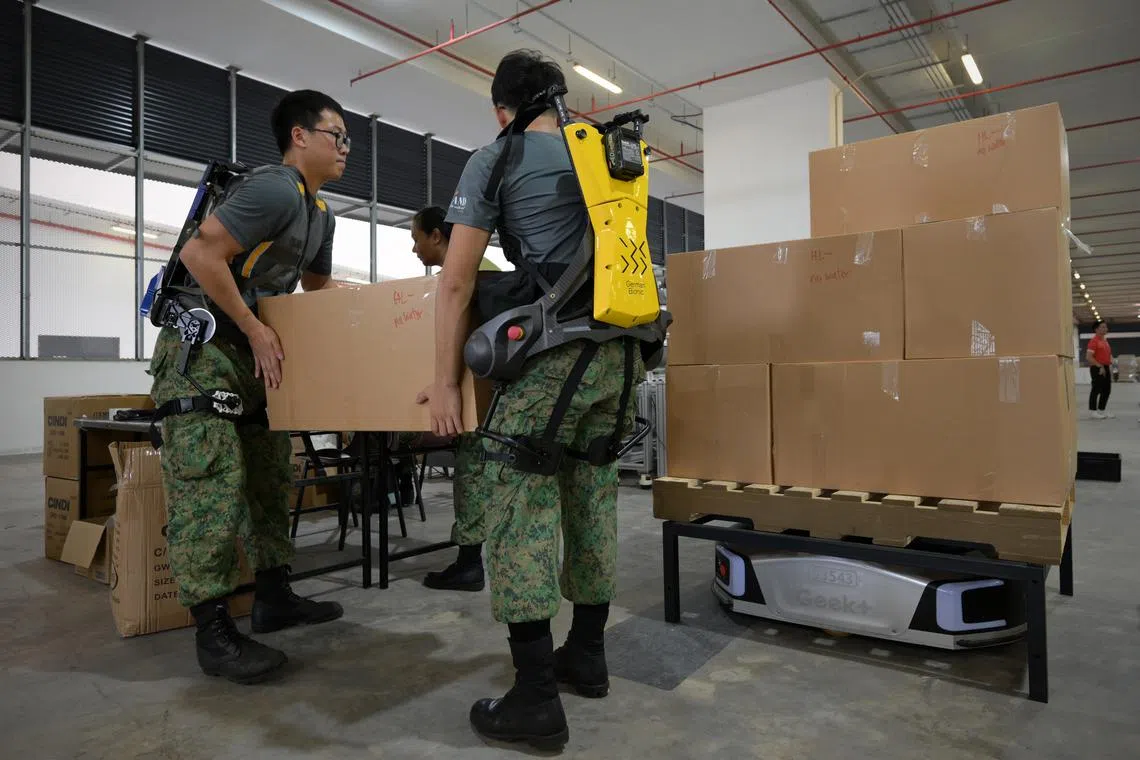
The exoskeleton suit is worn like a harness, supporting the soldier’s movements and reducing the strain on his back and joints.
ST PHOTO: NG SOR LUAN
Follow topic:
SINGAPORE - Donning robotic frames that transform them into “superhuman” lifters, soldiers easily handle heavy boxes while preparing and assembling packs for the 2024 National Day Parade (NDP).
For the first time, these soldiers get to wear exoskeleton suits – wearable devices that rest on their shoulders and back, supporting their bodies as they lift boxes ranging from 10kg to 45kg in weight.
“With the exoskeleton, it feels like I’m carrying half the weight of these boxes,” said Private Muhammad Noor Hyder, speaking to the media at the packing centre at Nee Soon Camp on July 16.
“It supports my back and I don’t have to use too much effort,” he said, adding that the suit, which weighs about 10kg itself, took him some time to get used to.
The 21-year-old full-time national serviceman is one of 70 NSFs and regulars tasked to assemble more than 300,000 NDP packs for this year’s celebrations.
Two types of exoskeleton suits are being used, one of which is a product of European robotics company German Bionic. The other is a sample provided by the NUS Biorobotics Lab.
Each exoskeleton weighs 10kg and 5kg, respectively.
The exoskeleton is worn like a harness, supporting the soldier’s movements and reducing the strain on the back and joints.
The support from the device helps to maintain a comfortable posture for the wearer, and reduces the risk of injury when lifting heavy items.
In addition to the exoskeleton suits, other technologies like an improved automated production line and ground robots are also being trialled in the assembly of the NDP packs, said Major Desmond Lim, chairman of the NDP Pack Committee.
These technologies aim to reduce the overall manpower and man-hours required to prepare the packs, he added.
The automated packing line for NDP packs was first trialled in 2022, and made a comeback in 2024 after technological improvements were made and safety measures implemented, said MAJ Lim.
Ten robotic arms are lined up in the shape of a round conveyor belt, with each arm having either a suction or gripper attached to it, allowing it to pick up items and drop them in each NDP pack.
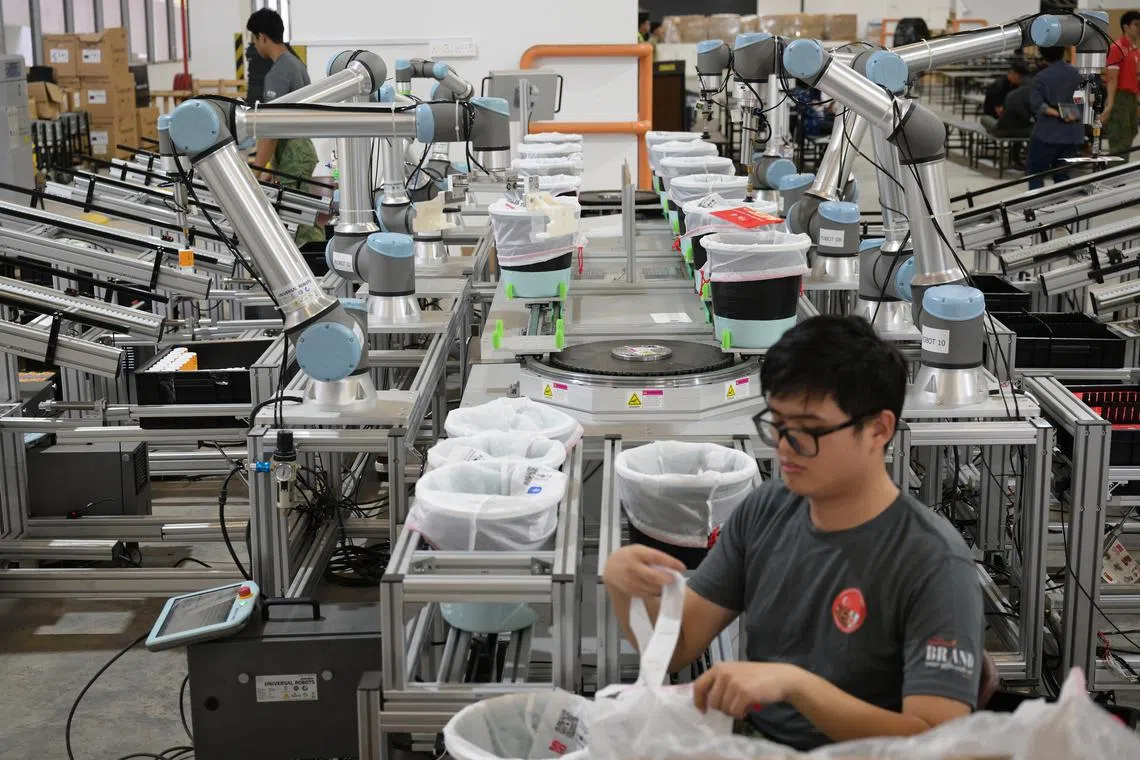
The automated packing line for NDP packs was first trialled in 2022, and made a comeback in 2024 after technological improvements were made.
ST PHOTO: NG SOR LUAN
Even with the automation, manpower is still necessary for quality control and to pick up items that may have fallen off or been missed, said MAJ Lim.
Still, the automated packing line reduces manpower needs by about 50 per cent compared with a manual packing line, requiring only four soldiers instead of the usual eight, he added.
“These soldiers are trained to program and do any rectification of any stoppages of the systems,” MAJ Lim said.
Both the manual and automated packing lines have the same output of about 1,000 to 1,250 NDP packs daily.
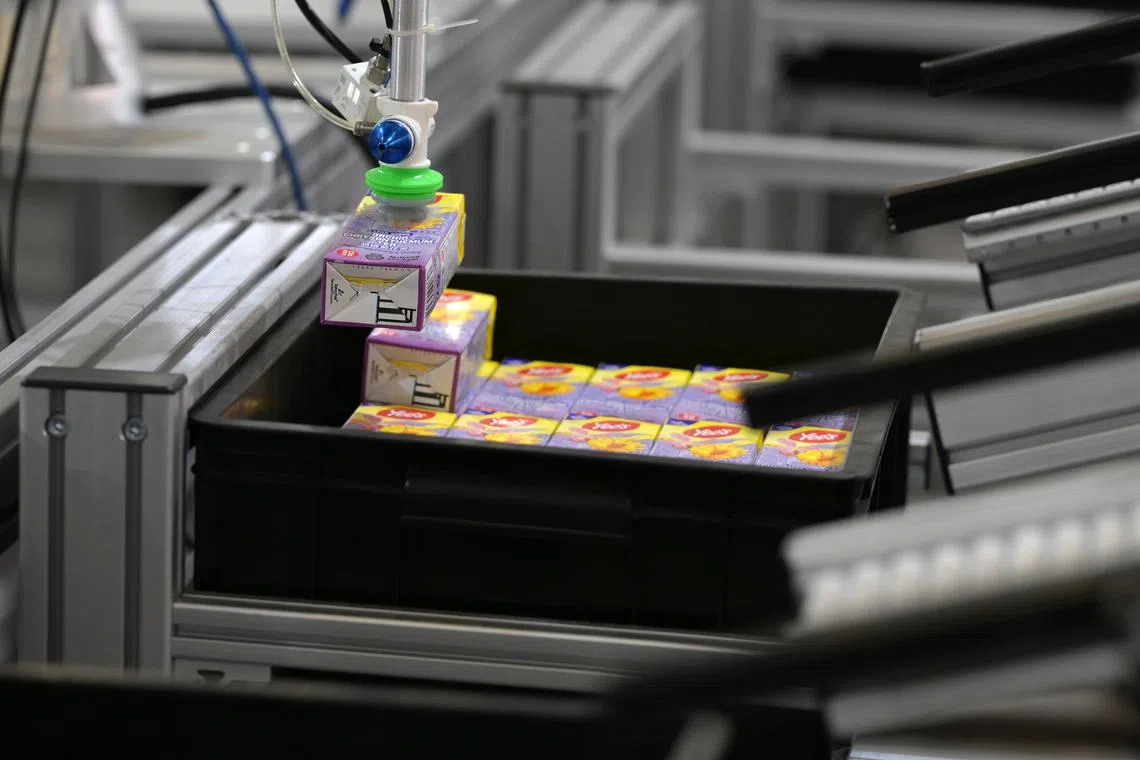
An automated packing line requires less manpower than a manual one.
ST PHOTO: NG SOR LUAN
“But this is because we are running the automated packing line at a slower and safer speed, to make sure that the system is running smoothly, without any risk of danger or harm to our soldiers,” MAJ Lim said, adding that he hopes to improve the system for increased efficiency and output.
The automated packing line prepares about 10 per cent to 15 per cent of the total output daily, contributing to about 10,000 NDP packs being assembled each day.
Lance Corporal Shourjo Chakravarty, one of the NSFs operating the automated packing line, said he and his team spent about a week learning how to program the robots, to ensure they run smoothly.
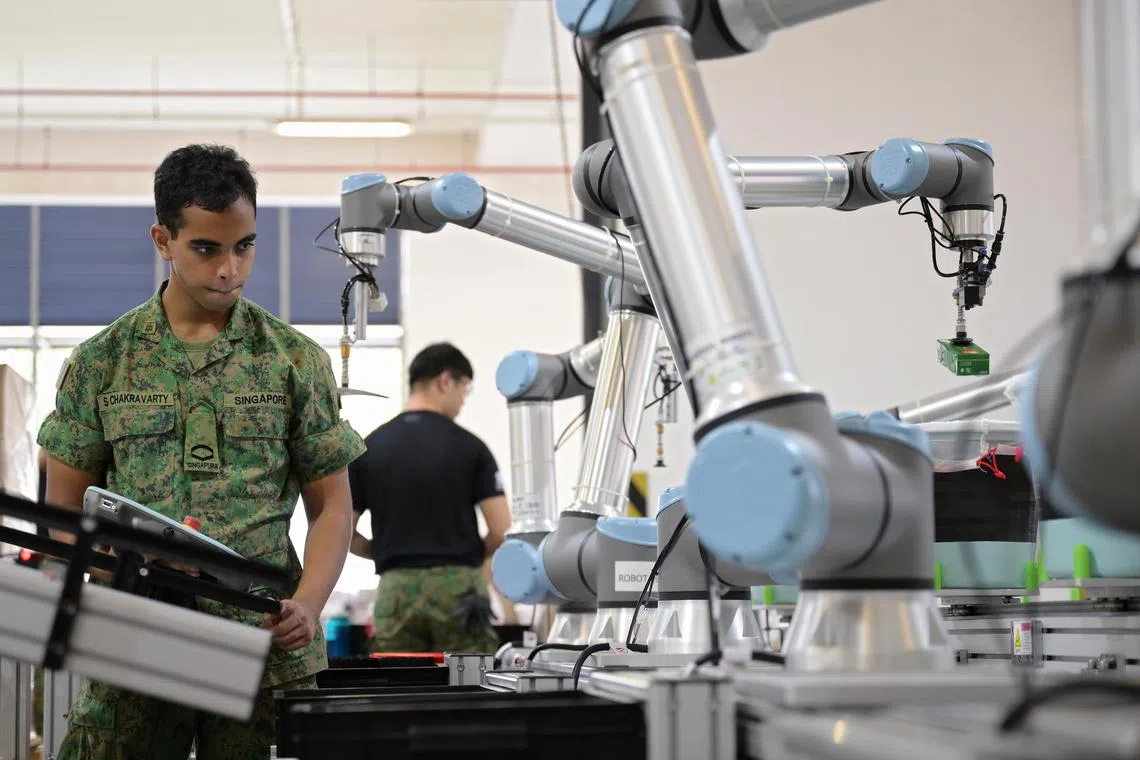
Lance Corporal Shourjo Chakravarty said he and his team had spent about a week learning how to program the robots, to ensure they run smoothly.
ST PHOTO: NG SOR LUAN
Some items have to be placed in specific positions, which is a process that requires a lot of trial and error, he added.
The completed NDP packs are packed into boxes of about 15 each and placed on pallets, or wooden platforms, which are then transported by autonomous mobile robots (AMRs) to a demarcated area at the packing site.
These AMRs, or ground robots, which resemble household robot vacuums but are about four times larger, are used to move heavy loads weighing up to one tonne, said MAJ Lim.
He added that these robots are programmed to move from one QR code to another across the floor of the packing centre. The robots are mainly used to transport packed NDP bags for loading onto trucks headed to the Padang, he said.
With all these technologies in place, the overall manpower needs are reduced by 30 per cent, he added.

Ground robots, resembling household robot vacuums but about four times larger, are used to move heavy loads weighing up to one tonne.
ST PHOTO: NG SOR LUAN
MAJ Lim said the army is exploring other uses for these technologies in day-to-day operations.
The NDP 2024 packs feature artwork by 40 students with special needs
The students, who come from 22 government-funded special education schools, created six unique designs for the packs based on the six pillars of Total Defence: military, civil, economic, social, psychological and digital.
Their designs are printed on recycled polyester tote bags and given to those attending the National Education shows, as well as members of the public at the NDP previews and the NDP.
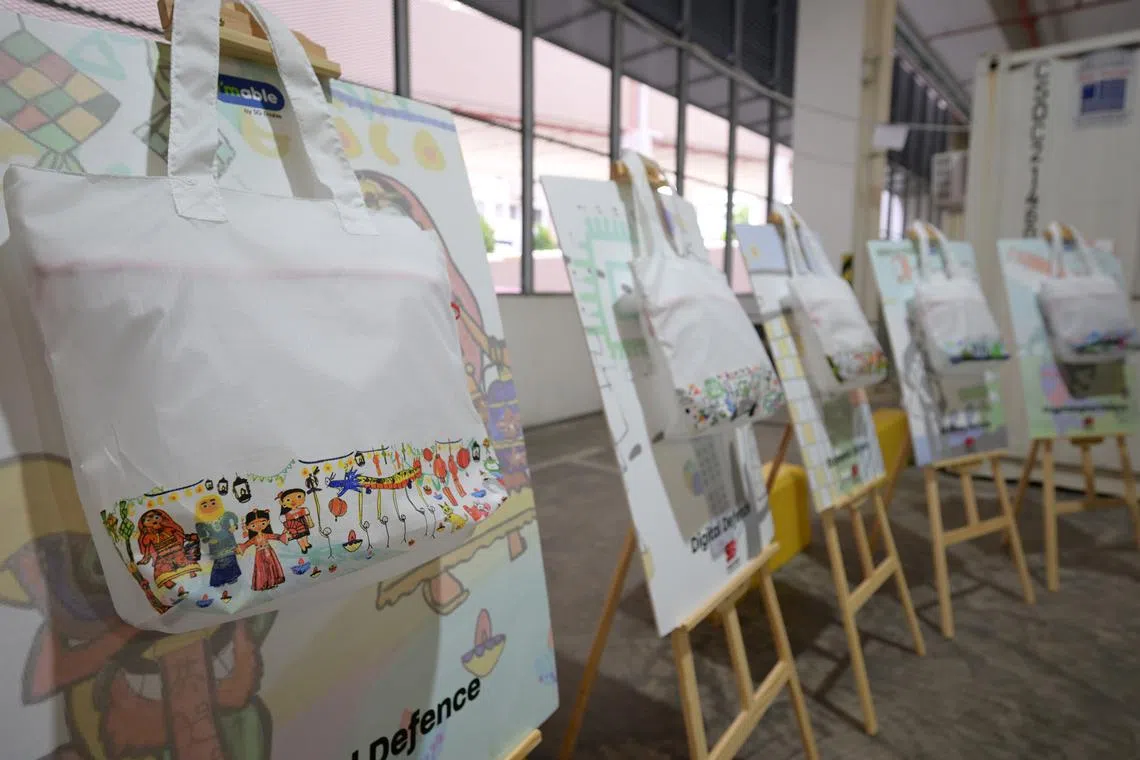
The NDP 2024 packs feature artwork by 40 students with special needs, aged between eight and 18.
ST PHOTO: NG SOR LUAN


